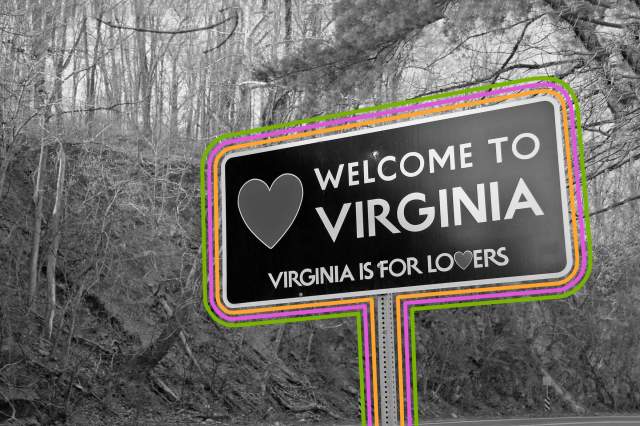
Weymouth, Massachusetts
Weymouth is the second-oldest settlement in Massachusetts, and dates back to 1622. London merchant Thomas Weston sent 60 men there to run a trading post colony to send goods back to England, and named the place Wessagusset. However, the colony was unsuccessful, the settlers soon began to starve, and most opted to move to nearby Plymouth. Six months later, British navy captain Robert Gorges brought 120 men to the Wessagusset site, settled there, and renamed it Weymouth. It became part of the Massachusetts Bay Colony in the 1630s. Located about 10 miles southeast of Boston, the city is now home to approximately 56,000 people.

Plymouth, Massachusetts
You’re likely familiar with the story of the pilgrims landing at Plymouth Rock from elementary school classes — but the real history isn’t exactly how many of us have heard it. The pilgrims did arrive there and began to explore their new home in 1620, but it had already been named Plymouth since at least 1614 with Captain John Smith’s journey. There are no actual accounts of the pilgrims landing on the exact spot where Plymouth Rock sits today (you can go see it at the downtown oceanfront), and they had actually likely planned to move on from the spot, but many of the pilgrims were sick and winter was looming. They built their settlement on a former Indigenous cornfield, established their own government under a document called the Mayflower Compact, and operated as an independent province until 1691, when the place was absorbed by Massachusetts.

Jersey City, New Jersey
The English history of Jersey City, New Jersey — located directly across the Hudson River from New York City — dates back to explorer Henry Hudson and the colony of New Netherland, which was established on Lenape Indigenous land in 1623. Michael Reyniersz Pauw, a knight, was given a land grant in what’s now Jersey City, with the stipulation that he bring in at least 50 people — which he didn’t do. In 1633, he had to sell his land back to the Dutch West India Company. Relations with the Lenape began to falter immediately because of the colonists’ treatment of the Indigenous people, and the settlement was almost completely destroyed within 10 years. The British remained in control of the land until the Revolutionary War. In 1779, Alexander Hamilton joined other leaders from New York and New Jersey to lay out and develop the city. Now, the city is home to nearly 262,000 people — and surrounds the most well-known woman of them all, the Statue of Liberty (though her address is officially in New York).
More Interesting Reads

Albany, New York
The English history of Albany, New York, starts with a simple trading post and fort built by the Dutch in 1614 on Iroquois land. Explorer Henry Hudson couldn’t move forward any further on the present-day Hudson River, so his Dutch sponsors opened an administrative outpost for the Dutch West India Company at the point he stopped, on Westerlo Island, called Fort Nassau. Due to ice and flood damage, the fort was moved north in 1615 and then replaced by the new Fort Orange in 1623, a little further north. The Dutch West India Company established a town called Beverwijck in 1652; it became known as Albany (after the Duke of Albany) when the Dutch surrendered to the British in 1664. Albany stayed under British power until the Revolution, and it was named New York’s capital in 1797.

Newport News, Virginia
Although it was officially founded in 1896, Newport News, Virginia, had been a city long before then. It first showed up in print as “Newportes Newes” in the Virginia Company’s 1619 records. Newport News is named after Captain Christopher Newport, who led settlers to Jamestown in 1607. When the colonists left Jamestown in 1610 after a period of starvation, they reunited with Captain Newport on the James River. He told them supplies and reinforcements had arrived, so they returned to Jamestown to await them. From then on, the point at which they met Captain Newport — at the junction of the James River and the Chesapeake Bay — was referred to as Newport’s News. It was eventually shortened to just Newport News. The city now has about 180,000 residents and fans out nearly 70 square miles from that initial meeting point.

Kecoughtan, Virginia
Kecoughtan, Virginia, was settled in 1610 by the same English settlers who founded Jamestown. It was originally home to the Kikotan Algonquin tribe and was the place where English settlers first made contact with Virginia’s Indigenous population. While initial meetings were relatively peaceful, the English settlers soon drove away or tragically killed the Indigenous population. By 1690, Kecoughtan was absorbed by the larger city of Hampton, Virginia, and remains a part of its municipality today.

Hampton, Virginia
Also founded in 1610, Hampton, Virginia, is the oldest continuously inhabited English-speaking settlement in the country. It is significant because of its military history. After the United States became an independent country, Hampton became a major military outpost due to its strategic location and abundant natural resources. Hampton had easy access to both the Chesapeake Bay and the James River, making it a great port for shipping weapons and other supplies. This also made it an ideal defensive location. During the Civil War, Virginia itself was the capital of the Confederate States. Hampton, however, maintained status as a part of the Union during the entire conflict. Along with Newport News, Norfolk, and Virginia Beach, Hampton is part of the Hampton Roads metropolitan area, home to over 1.8 million people, and celebrates its status as the birthplace of colonial America.

Santa Fe, New Mexico
Santa Fe — the oldest state capital still in existence — was officially founded in 1607, but it has actually been in existence since around 1050, when it was home to the Pueblo Native Americans. The Spanish arrived in 1607, and the Pueblo peoples gathered together and attempted to overthrow them toward the end of the 1600s. Their attempts were unsuccessful, and the Spanish took control of the city. Santa Fe remained a Spanish city until 1821, when Mexico declared its independence. Santa Fe was briefly a part of the Texas Republic in 1836, and was eventually conquered from Mexico during the Mexican-American War in 1848, after which it officially became a part of the United States. Santa Fe residents seemingly embrace all aspects of their long and contentious history, and tourists can learn more about it by visiting their fascinating history museums and art galleries.

Jamestown, Virginia
The second-oldest European-established city in the U.S. is Jamestown, Virginia, founded on April 26, 1607. The first permanent English colony in North America had many ups, downs, and false starts before it became the city it is today. It was originally called “James Fort,” named after James Ⅰ of England, but the settlement was abandoned just three years later after the colonists faced starving conditions and conflict with the Indigenous population. Fourteen years later, however, in 1624, Virginia became an official British colony, and more order was brought to the city, which had slowly been reinhabited. Its name was changed to Jamestown, and the city became the capital of the British colonies. By the mid-19th century, the city was declining, and concerned citizens began campaigns to preserve this original U.S. city in the early 1900s. These efforts were successful, and the city celebrated its 400th year of existence in 2007. Today, you can visit the Jamestown Settlement and see what life was like back in the city’s first years.

St. Augustine, Florida
St. Augustine, Florida, was founded on September 8, 1565 — more than 200 years before the United States was an official country. Pedro Menéndez de Avilés was an explorer from Spain who came ashore in Florida on August 28, 1565, on the Catholic feast day of St. Augustine. St. Augustine soon became the capital of Spanish-controlled Florida, and remained so until 1824, when the country had been officially united and the capital of Florida became Tallahassee. Today, visitors to the city can discover more about the history of America’s oldest city in the Castillo de San Marcos history museum.











